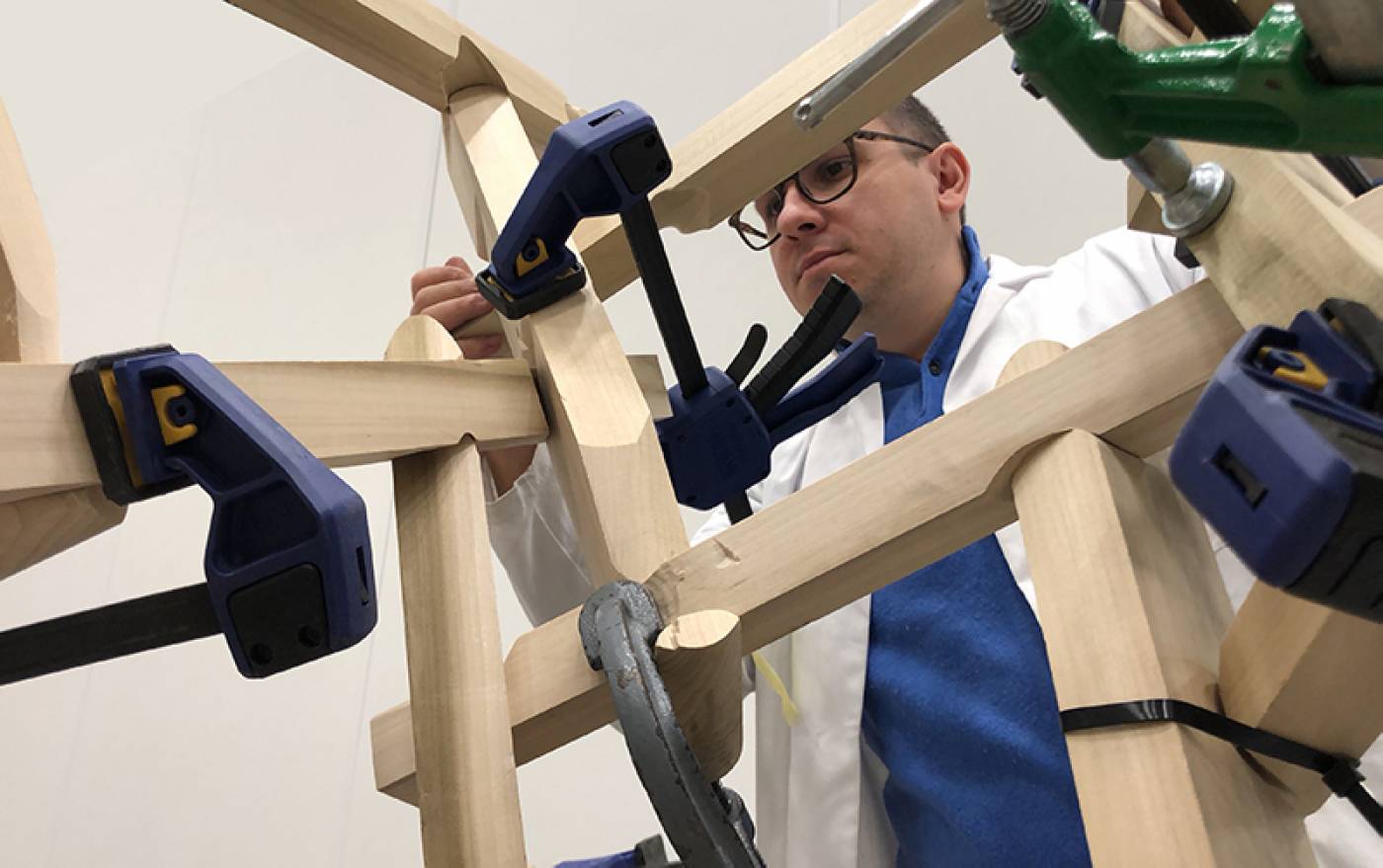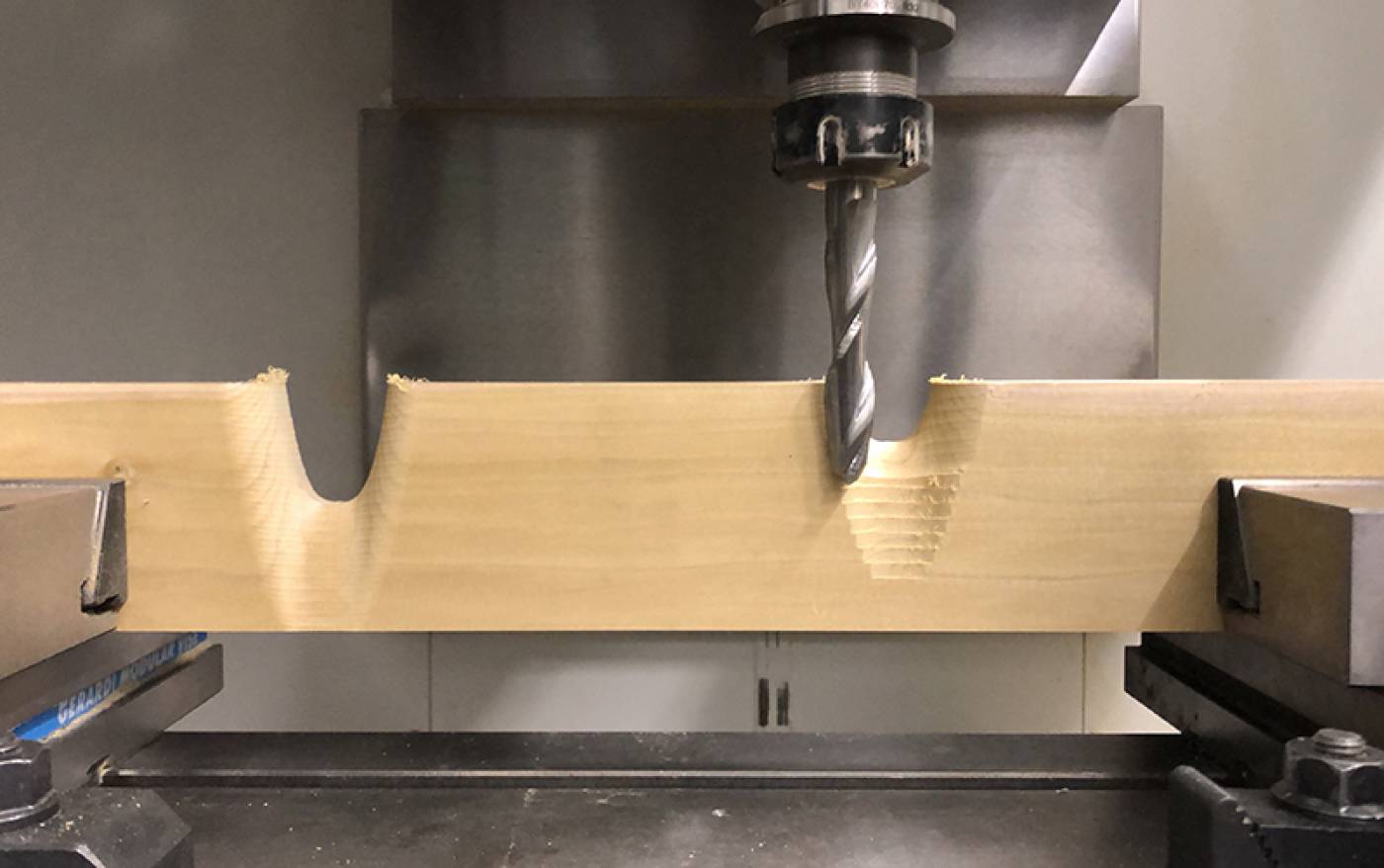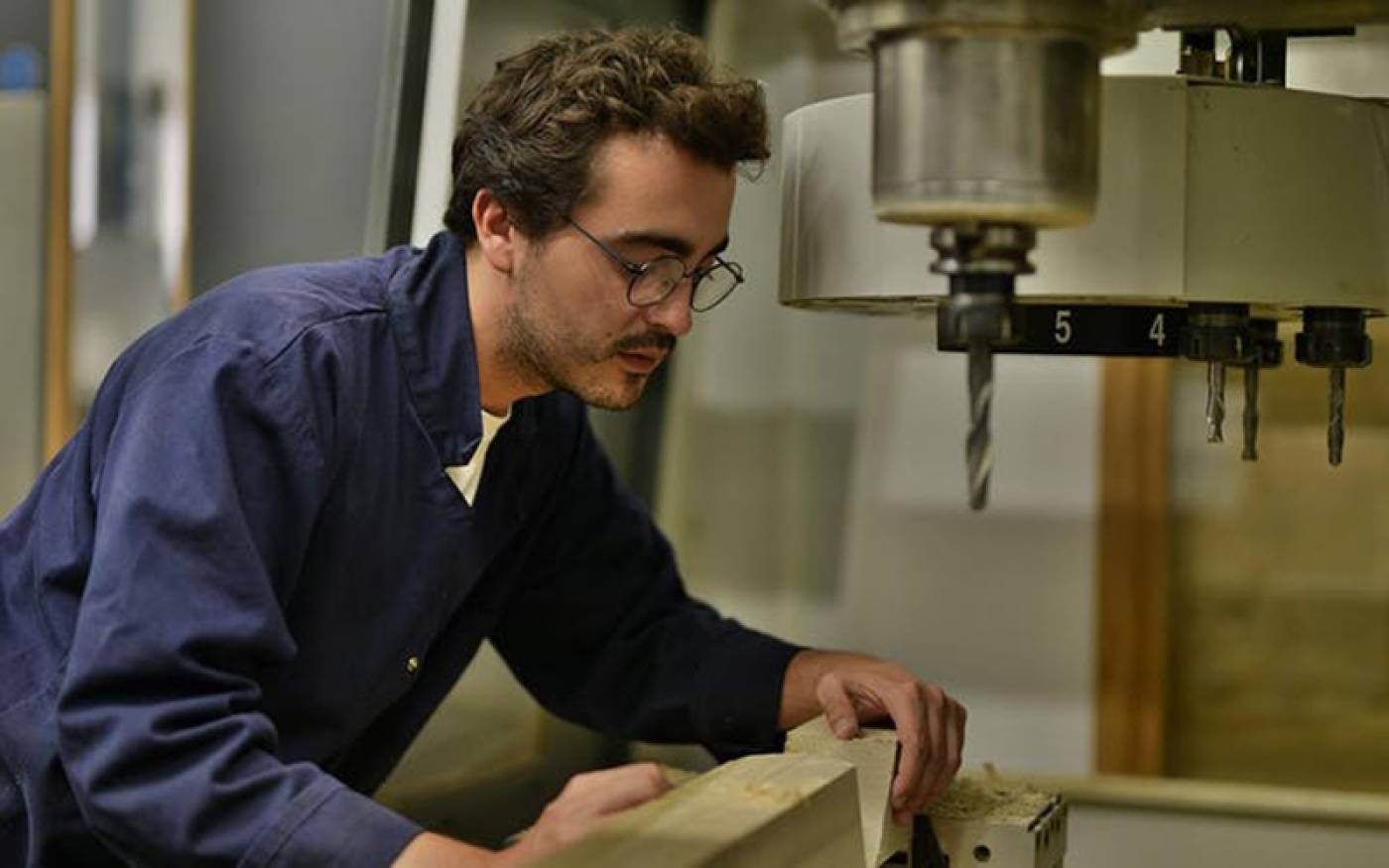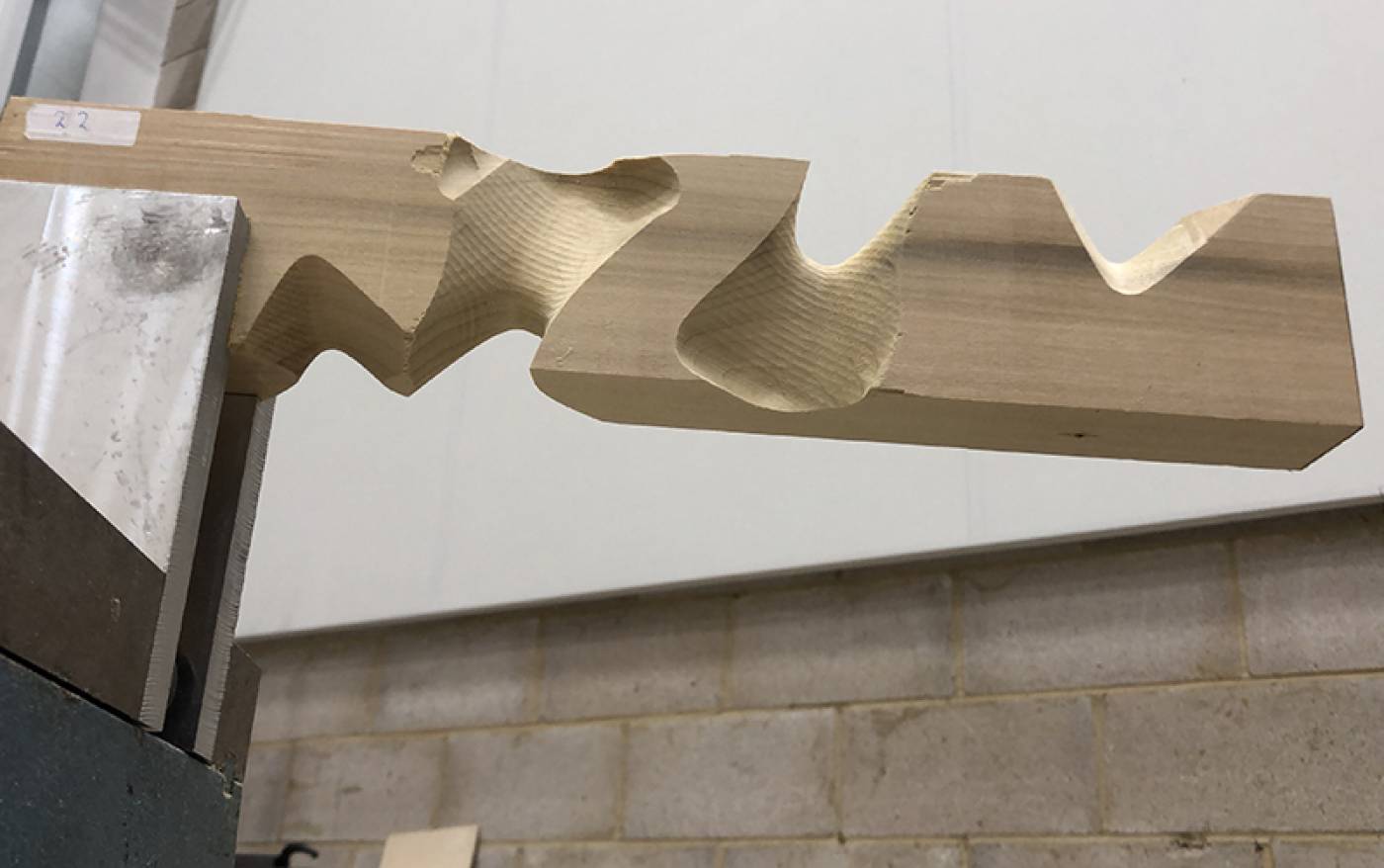Alfredo Salgado Ferrer and Fabrizio Tozzoli




This project explores the possibilities of self-supporting reciprocal timber structures. By focusing on the design of the joint, it seeks to minimise the usage of hardware fixings and non-wood interfaces. Digital design and fabrication tools – CNC machining and multi-axis robotics – are implemented into a design-to-fabrication workflow which opens up new potentials for joint geometries and methods of assembly, while maintaining a high degree of manufacturing precision.
The prototype – the latest in a series of developments – is a funnel-like structure composed of interlocking, reciprocal frames. The modified lap joins that connect the elements are designed as continuous hypar surfaces which enable self-alignment and provide enough friction for stability. The outcome resembles a tree, branching out into a dense network of branches with thinner sections. The mutually supporting elements imply an assembly strategy that can be iterative and sequential, while the gradation in the member sections responds to the varying loads throughout the structure.
- Images
1. Assembly of Reciproci-Tree
2. CNC Contour milling. Finishing pass
3. Milling on the TM3 Haas machine
4. Robotic Milling toolpath trials
 Close
Close

